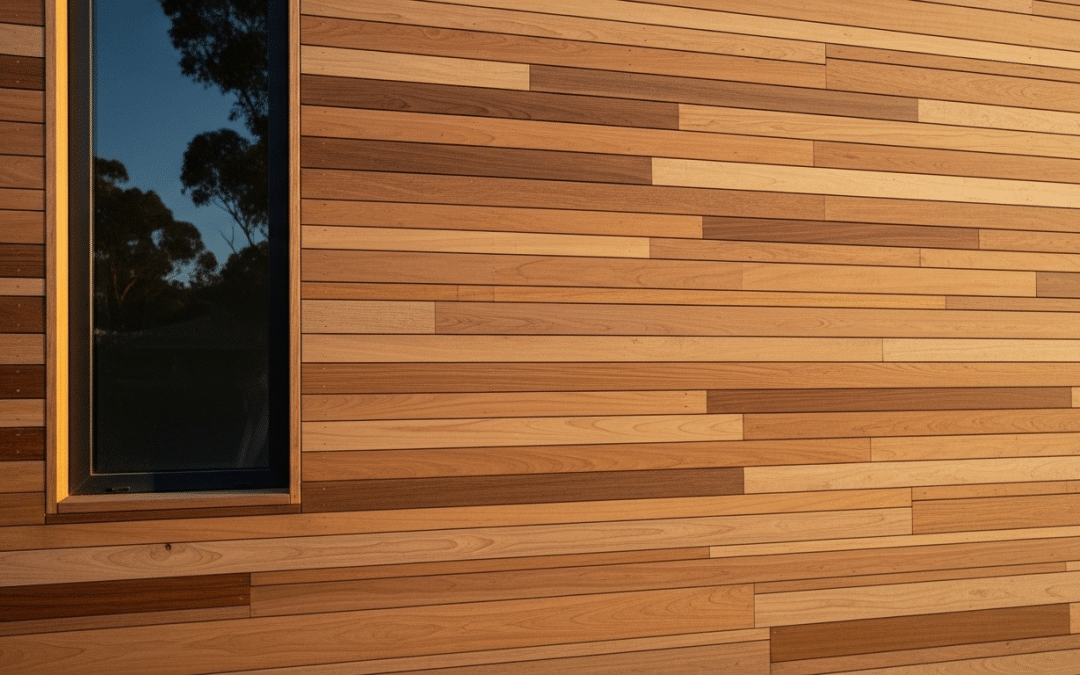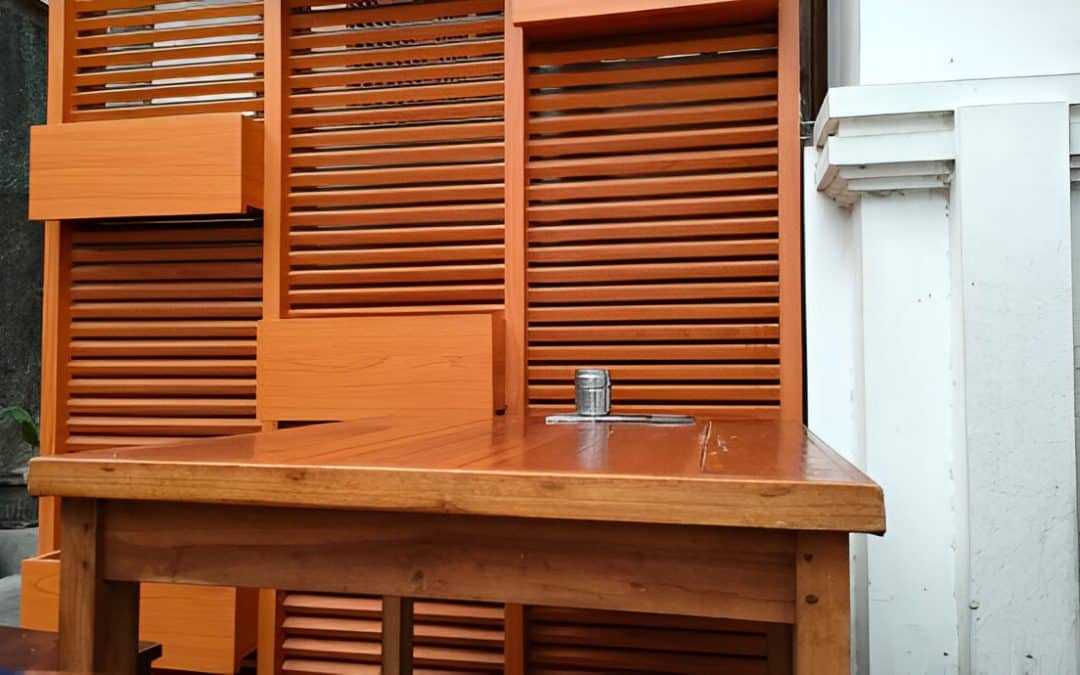
Five Expert Tips for Choosing the Right Timber Cladding for Your Project
When it comes to transforming a building’s exterior, few materials rival the warmth and natural beauty of timber cladding. More than just an architectural feature, it’s a smart investment that enhances durability, insulation, and street appeal all at once. Whether you’re designing a modern home, a coastal retreat, or a commercial façade, choosing the right timber cladding can define the entire character of your project. But with so many timber species, profiles, and finishes available, where do you start?
In this guide, we’ll share five expert tips for choosing the right timber cladding so you can achieve a finish that’s stylish, sustainable, and built to last.
Tip 1 – Choose the Right Timber Species
Which timber species should I use for exterior cladding?
The species you choose sets the foundation for your cladding’s performance and style. Durable Australian hardwoods like Spotted Gum, Blackbutt, and Silvertop Ash are excellent for exterior use, offering natural resistance to decay and insects. Western Red Cedar is a popular softwood alternative known for its lightweight and rich colouring.
When selecting, consider:
- Durability Class: Aim for Class 1 or 2 for outdoor applications.
- Aesthetic: Match the colour and grain to your architectural theme.
- Sustainability: Choose FSC or PEFC-certified timbers to ensure responsible sourcing.
Expert Tip: If your project is in a high-moisture or coastal area, opt for denser species like Spotted Gum to resist weathering.
Tip 2 – Pick the Perfect Cladding Profile & Style
What profile or style of cladding suits my building and design?
The profile of your timber cladding influences both appearance and function.
- Horizontal cladding (e.g., shiplap or tongue-and-groove) delivers a traditional, sleek look and enhances width.
- Vertical cladding (e.g., board-and-batten) creates height and a modern architectural edge.
Your climate and exposure matter too. Vertical boards help shed rain efficiently in wetter regions. For modern designs, consider mixing profiles for contrast.
Expert Tip: Always allow for timber movement and proper fixings to prevent warping or splitting over time.
Tip 3 – Understand Durability, Maintenance & Lifespan
What are the durability, maintenance, and lifespan considerations?
With the right species and treatment, timber cladding can last 40+ years. Hardwoods like Spotted Gum and Blackbutt are naturally durable, while softer species may need more frequent recoating.
To maximise longevity:
- Ensure ventilation behind cladding to prevent moisture buildup.
- Use quality sealers or oils to protect against UV and water damage.
- Recoat every 12–24 months, depending on exposure.
Expert Tip: Regular maintenance isn’t just upkeep, it’s an investment that keeps your cladding performing beautifully for decades.
Tip 4 – Compare Cost vs. Value
How do I assess the cost vs. value of different timber options?
While hardwood cladding may seem expensive upfront, it often delivers the best long-term value due to low maintenance and high durability. Softwoods like Cedar or Pine are more affordable initially but may need more frequent treatment.
Consider:
- Upfront Cost: Material + installation.
- Lifecycle Cost: Maintenance, recoating, and potential replacement.
- Aesthetic Longevity: How well the timber ages and weathers.
Expert Tip: The best value isn’t the cheapest; it’s the timber that meets your design goals and performs for years with minimal upkeep.
Tip 5 – Install & Detail for Performance
What installation and detailing issues should I consider?
Even the best timber can fail without proper installation.
- Allow for airflow and drainage with a ventilated cavity.
- Use stainless steel fixings to avoid rust and staining.
- Apply an appropriate weather barrier behind the cladding.
- Leave expansion gaps for natural timber movement.
Expert Tip: Partner with experienced installers who understand timber behaviour. Correct detailing ensures your cladding lasts as long as it looks good.
Sustainability & Compliance
Are there sustainability or regulatory aspects to know?
Sustainably sourced timber cladding supports eco-friendly building practices. Look for FSC or PEFC-certified products that guarantee responsible forestry.
If your project is in a bushfire-prone zone, select species with high BAL (Bushfire Attack Level) ratings, such as Blackbutt or Spotted Gum. These species meet Australian standards while maintaining aesthetic appeal.
Expert Tip: Using certified timber not only reduces your environmental footprint it also adds value and credibility to your project.
Finishing & Weathering Tips
What finish or surface treatment should I apply, and how will it age?
Finishes protect timber and shape how it weathers. Penetrating oils enhance the wood’s natural grain, while UV-resistant stains or paints preserve colour. Left untreated, most timbers develop a beautiful silver-grey patina over time.
To maintain your finish:
- Clean cladding annually to remove dirt and mould.
- Reapply finishes every 1–2 years, depending on exposure.
- Choose finishes recommended for your specific timber type.
Expert Tip: Test finishes on a small section first, timber colour and grain can vary naturally.
Choosing the right timber cladding transforms any building, adding warmth, texture, and durability. By focusing on species selection, style, detailing, and care, you can create a façade that performs beautifully for decades.
At Austimber, we supply premium, sustainably sourced cladding options tailored to Australian conditions. Whether you’re designing a coastal retreat or a contemporary commercial façade, our experts can guide you every step of the way.
Explore our timber cladding range or contact our team for professional advice on your next project.
FAQs
1. What are the best timber species for exterior cladding?
Popular choices include Spotted Gum, Blackbutt, Silvertop Ash, and Western Red Cedar. These species offer excellent durability, weather resistance, and aesthetic appeal. Hardwoods like Spotted Gum and Blackbutt are ideal for Australian conditions, while Western Red Cedar provides a lighter, refined finish. Always check each timber’s durability class and ensure it’s FSC or PEFC certified for sustainability.
2. How do I decide on the cladding profile (horizontal, vertical, or board-and-batten)?
Your choice depends on design and performance goals. Horizontal profiles (shiplap, tongue-and-groove) create classic appeal and broaden façades. Vertical or board-and-batten profiles suit modern designs and help shed rain efficiently. Consider your project’s exposure, desired style, and installation detail before deciding.
3. What maintenance does timber cladding need, and how long will it last?
With quality species and proper care, timber cladding can last 30–50 years. Clean annually, check for moisture issues, and re-oil or stain every 12–24 months depending on exposure. Regular maintenance preserves colour, prevents cracking, and extends life significantly.
4. What fire, insulation, and regulatory requirements apply to timber cladding?
In bushfire-prone areas, choose BAL-rated timbers such as Blackbutt, Spotted Gum, or Ironbark. Ensure compliance with AS 3959 and local building codes. Many timbers also provide natural insulation, improving energy efficiency. Always confirm certifications and consult local council or builder guidelines.
5. Can timber cladding be mixed with other materials or used on coastal or high-rise buildings?
Yes. Timber cladding pairs beautifully with stone, steel, and concrete for modern façades. In coastal zones, use dense hardwoods like Spotted Gum and maintain regular finishing to resist salt and moisture. For high-rise applications, specify engineered systems that combine timber aesthetics with fire-rated substrates.

